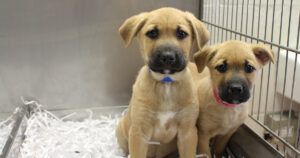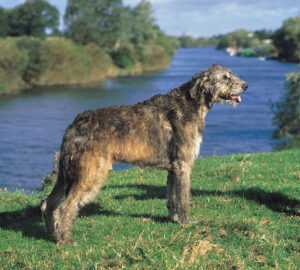Posts Tagged ‘pet adoption’
National Mutt Day: Here Are Some Ways To Celebrate
 Question of the month. What do Higgins ( the dog from the film Benji) , Laika ( the Soviet space dog), Pluto (Mickey Mouses’s pet dog) and Clifford the Big Red Dog all have in common? Believe it or not, they are all famous mixed-breed dogs and on July 31, it is National Mutt Day.
Question of the month. What do Higgins ( the dog from the film Benji) , Laika ( the Soviet space dog), Pluto (Mickey Mouses’s pet dog) and Clifford the Big Red Dog all have in common? Believe it or not, they are all famous mixed-breed dogs and on July 31, it is National Mutt Day.
National Mutt Day, also known as National Mixed Breed Dog Day, is a day dedicated to celebrating mixed breed dogs and raising awareness about their value as pets. It is observed on two different dates throughout the year: July 31st and December 2nd.
On National Mutt Day, people are encouraged to adoopt mixed breed dogs from animal shelters and rescue organizations rather than buying from breeders. The day aims to promote the adoption and well-being of mixed breed dogs and to combat the stigma and misconceptions surrounding them.
Mixed breed dogs, often referred to as mutts, are dogs that have a combination of different breeds in their ancestry. They can exhibit a wide range of characteristics, both in terms of appearance and temperament. Adopting a mutt can be a rewarding experience, as they often have unique and diverse traits.
If you are interested in celebrating National Mutt Day, you can consider doing the following:
- Visit your local animal shelter or rescue organization: Spend some time with the mixed breed dogs available for adoption, and consider bringing one into your family if it is the right fit for you.
- Volunteer at an animal shelter: Offer your time and help by volunteering at a local shelter. You can assist with walking the dogs, cleaning their encolosures, or providing general care.
- Spread awareness: Use your social media platforms to share information about National Mutt Day and the benefits of adopting mixed breed dogs. Encourage others to consider adopting a mutt or donate to local animal welfare organinzations.
- Organize an event: Consider organizing an event in your community that promotes adoption and celebrates mixed breed dogs. This could include activities such as doggie playdates, training sessions, or informational sessions about responsible pet ownership.
Here at Olsen Veterinary Clinic, we take pride in taking care of EVERY animal, no matter the breed or type. If you have any questions about your pet, don’t hesitate to contact our office today!
Cat Safety Tips: How to Protect Your Furry Companion
 Many of us have those 4-legged feline friends that love to hunt and no amount of domestication has changed their inherent desire to patrol their domain in the hunt for prey. We have all seen the look of pure joy on our cat’s faces when they watch birds and small rodents from the window. And because cats are naturally curious, they love to explore. That is why some people allow their cats to spend considerable time outdoors. The downside it that the outdoors has many dangers that can linger and it is our job as responsible owners to keep them safe.
Many of us have those 4-legged feline friends that love to hunt and no amount of domestication has changed their inherent desire to patrol their domain in the hunt for prey. We have all seen the look of pure joy on our cat’s faces when they watch birds and small rodents from the window. And because cats are naturally curious, they love to explore. That is why some people allow their cats to spend considerable time outdoors. The downside it that the outdoors has many dangers that can linger and it is our job as responsible owners to keep them safe.
While most experts would recommend that the best thing to do would be keeping them indoors, you can allow them to get some fresh air in a relative safe environment away from predators that would prey on your cat and making sure that they are protected when they go outside.
Some owners may try to leash train their cat. This is one of the easiest means of monitoring where your cat goes because you get to go along for the walk. Cat’s generally dislike harnesses, so they will need to be made accustom to using them first. This may entail having the harness on inside and provide positive reinforcement with treats. Supervised outdoor time is a great way to bond with your cat and give her the mental stimulation that her wild instincts crave.
Whether you allow her to roam free or keep her as close as possible, it is important for the cat to either have a microchip or some other form of identification on your pet. If you use a collar, a safety collar with an elastic panel will allow your pet to break free if it gets caught.
To allow cats to have the ability to go outside, some owners make a catio that keep predators out and their pet in. This can serve as an outdoor playground within the vicinity of your home. You can feel safe knowing where it is and that she is not running out into the street or being picked up by predator birds or other mammls.
If your cat goes outdoors, it is at risk to the diseases and parasites that the outdoor feral cats have. So it is important to have your pet’s vaccines updated and kept on flea and tick control.
Your back yard can be dangerous to your pet if you have planted some toxic plants for landscaping. Plants like lillies may look nice in your back yard, but they can be toxic to your pet. It is important to make sure that anything potentially toxic and dangerous be picked up and secured. I would also recommend not having mouse poisons available because not only would the poison be toxic, eating a dead mouse that has succumbed to the poison may be also lethal to the cat.
It is important to have a regular dinner time. That way when the cat’s return for it evening meal, they will be able to be locked up for the evening. This will protect her from the nightly predators and allow her to go on daily patrol the next morning.
For any more questions on cats, or any other furry companion, contact our offices today!
Dr. Olsen’s Breed Spotlight: The Peterbald Cat

The Peterbald cat is a loyal and affectionate feline, known for being “dog-like”. They are very friendly, playful, energetic, and smart. The Peterbald is a descendent of the Don Sphynx cat, still bearing some of its qualities like its varying amount of fur, dexterous front paws, big ears, and wrinkly skin. The other feline in a Peterbald cat is the Oriental Shorthair cat. The Peterbald still carries its long and lithe body shape and oblong head shape from them. However, unique to a Peterbald is their long front toes with webbing. It allows them to hold and manipulate toys, unlike many other cats.
The Peterbald’s fur varies from a velvety, fuzzy fur to a completely hairless cat. There is even a type that doesn’t even have whiskers or eyebrows, making their skin feel sticky to the touch. Also interesting is that Peterbald’s fur changes throughout their life. This means that if a Peterbald has one of these coats at birth, it can change significantly during their first two years of life, and the hair can be altered, gained, or lost.
The care of Peterbald cats varies based on their coat. If they have a thin fur coat or no hair at all, they require weekly bathing and wipe downs to keep their skin free of harmful oils. Since Peterbald cats can have very thin coats, they need to be kept as inside cats. Moreover, many Peterbald cats can sunburn, have sensitivity to extreme temperatures, and can be easily injured when playing with other cats or children. But given proper care, these cats are relatively low maintenance and have very few associated breed-health issues.
If you are looking to adopt a Peterbald, know that these cats are still somewhat rare, so acquiring one is not an easy feat. Be sure to check with animal shelters, rescue groups, and reputable breeders to see if a Peterbald is needing a forever home. Since they are often not readily available, it can be difficult to find a Peterbald kitten. Important to note is that hairless cats are often sold for higher prices.
If you have any questions, feel free to contact Dr. Olsen at Olsen Veterinary Clinic at 618-656-5868!
Tips For Socializing Your Dog
 Socializing your dog teaches them how to react to the world around them healthily without any unnecessary fear or aggression. It is important to start socialization early, so it becomes their normal behavior. Ideally, it should be between three and 12 weeks of age, but not everyone is with their furry friend at that point in their life. Beyond 18 weeks, socialization gets a lot harder, but it is not impossible.
Socializing your dog teaches them how to react to the world around them healthily without any unnecessary fear or aggression. It is important to start socialization early, so it becomes their normal behavior. Ideally, it should be between three and 12 weeks of age, but not everyone is with their furry friend at that point in their life. Beyond 18 weeks, socialization gets a lot harder, but it is not impossible.
An important first step is to take your dog out on daily walks in public. This allows your dog to be exposed to many different experiences such as cars, other dogs, and strangers. The world becomes less scary after a few trips outside. Keep them on a short leash and take your dog on different routes to expose them to new sights and smells. Typically, new puppies should be exposed to different places, bodies of water, woods, beaches, and common neighborhood objects like street signs, bikes, strollers, skateboards, and benches.
Related, expose your dog to a wide variety of people such as men, women, and children so that they can get acclimated to the idea of people other than its owners. If your dog isn’t exposed to people other than its owners, it could become wary of anyone who isn’t their owner, so it is crucial to diversify whom your dog interacts with. Included in socialization is allowing your dog to meet unfamiliar people in unfamiliar clothes like hoods, jackets, sunglasses, and hats.
If your dog acts scared, stay calm and confident. Don’t push them, but don’t make a big deal out of their scared behavior. Use treats to give your dog a positive association with new people and experiences.
Socializing your dog allows them to enjoy the world around them and new experiences. To help your dog not fear new surroundings and people, start early, and show them all that your area has to offer! If you have any questions, feel free to contact Dr. Olsen at Olsen Veterinary Clinic at 618-656-5868.
Holiday Pet Gift Guide – 2021
 The holidays are a time for giving, and you can’t forget about your pets or a pet-lover in your life. I’ve assembled a list of the best pet gifts around to show your furry loved ones you care and help them participate in the holiday spirit.
The holidays are a time for giving, and you can’t forget about your pets or a pet-lover in your life. I’ve assembled a list of the best pet gifts around to show your furry loved ones you care and help them participate in the holiday spirit.
The easiest gift is that of more toys for your pet. You can get new toys you think they would like or replace the favorites that always seem to go missing. Here are some cute toy options that your pet would love. Here is a cute Christmas pickle dog toy. Here is a winter rope dog toy. Here is a cute snowman cat toy. Here is a catnip-based reindeer cat toy.
More practical, you could get new essentials like water or food bowls or new leashes. Items like these are always welcome since they get used daily by pets. Here is a nice modern option that is useful and still looks nice in your home. Here is the link.
For a more unique gift, you could get a pet DNA kit to see what their history is as an animal. For some kits, you can learn about their preferences as an individual animal. An example cat DNA test is linked here. Here is a dog DNA test. Here is a pet food and environmental intolerance test to see what bothers your pet.
You could also get your pet a nice jacket to keep them extra warm in the cold winter months. An example one for your dog is linked here. Maybe you’d like a more fun outfit to wear on the special holiday. An example is linked here.
Perhaps your dog likes to stick their head out the window. Some protective goggles for their eyes can be found linked here.
For the pet-lover in your life, you could get them a personalized pin for them to display their furry friend with pride. A handmade pin can be found linked here.
Maybe you are looking to splurge on your pet this winter. If your pet wants to go outside and is not allowed, or maybe they are getting old and can’t move as much as they used to but still wants to enjoy the outdoors, they could use a stroller like this one linked here to enjoy nature. Another splurge item could be this activity monitoring pet tracker. It’ll allow you to stay on top of your pet’s health.
Sharing the season of giving with your pets will only make it more enjoyable. If you have any questions, feel free to contact Dr. Olsen at 618-656-5868 or send him an email here!
What to Do Before Adopting a New Pet
 Adopting a pet is an exciting time for you and your family. However, it can be very overwhelming before your new furry friend comes home. Today, we will be discussing what you should do before your new pet comes to their forever home.
Adopting a pet is an exciting time for you and your family. However, it can be very overwhelming before your new furry friend comes home. Today, we will be discussing what you should do before your new pet comes to their forever home.
First, you should consider your current family. Do you have any other pets? How will they react to bringing in a new pet into the home? You also need to consider how your current home will serve for your new pet. Will your social life or work obligations affect your ability to care for this new pet? How do the other people you live with feel about having a new pet in the house? Are there any health issues that need to be accommodated? What kind of lifestyle do you want to live with your new pet? Are you looking for a dog to go running with or a cat to chill with? Are you in the position to train a pet with behavior issues or are you looking for a more relaxed pet experience? All these questions serve as a guide as to what kind, if any, pet you should adopt. If your current life is not suitable for a pet, maybe it’d be best to wait some time to where you will be more prepared to give your new pet the life they deserve.
More likely than not, the adopting agency will charge a fee to help mediate the costs of taking in unwanted or lost animals. This adoption fee will be a tiny fraction of money compared to how much money you will be spending over the life of your pet. You may also need to pay for your pet to be spayed or neutered before bringing them home. Some mandatory expenses of caring for a pet include food, veterinary care, licensing, collars/leashes/ID tags, cat litter, and grooming supplies. Other expenses that are highly recommended but not mandatory are permanent identification in the form of microchipping, training classes, professional grooming, spare supplies, beds, toys, crates, or carriers. There is also the chance that your furry friend will need emergency veterinary care which can get quite pricy. Before adopting a pet, it is important to make sure that you have the right financial state to be able to care and provide for your pet.
Before bringing your new pet home, you need to make sure that you will have the time to spend on taking care of your pet. Pets need to be fed two to three times a day. A pet parent should spend at least one hour per day giving direct attention to your pet in the form of training, exercising, grooming, or playing with them. A pet with a lot of energy will need more time to exercise and play with toys. Pets with long coats will need twenty minutes per day of grooming to keep their coat silky and not matted. Pets with medical conditions will also need extra attention. In the beginning of your adopted pet being home, they may need additional bonding and reassurance time in the first few weeks.
If you are completely prepared to give your pet the best life possible, the last thing you will need to supply are the necessary items for pet care. For dogs, these are food and water bowls, food, collars, leashes, ID tags, a bed, shampoo, nail clippers, brush/comb, poop baggies, toys, treats, and first aid supplies. For cats, they will need food and water bowls, food, kitty litter, collars, ID tag, carrier, nail clippers, brush/comb, toys, and first aid supplies. It could be best, however, to wait to see the size of your new pet for some of these items, as they will vary based on how big or small your new friend is.
Adopting a pet is an enjoyable yet stressful time in one’s life. Hopefully this list of preparation has made you feel more relaxed and prepared to bring your furry friend home. As always, feel free to contact Dr. Olsen at Olsen Veterinary Clinic at 618-656-5868 with any questions.
Dr. Olsen’s Breed Spotlight: The Irish Wolfhound
 For this next breed spotlight, I will be introducing you to the Irish wolfhound, likely for the first time. This dog is calm, dignified, and the tallest breed of dog (sorry Great Danes). Early ancestors of Irish wolfhounds were fearless, big-game hunters who could dispatch a wolf in single combat. Today, they are the most serene and agreeable of companions.
For this next breed spotlight, I will be introducing you to the Irish wolfhound, likely for the first time. This dog is calm, dignified, and the tallest breed of dog (sorry Great Danes). Early ancestors of Irish wolfhounds were fearless, big-game hunters who could dispatch a wolf in single combat. Today, they are the most serene and agreeable of companions.
The amiable Irish Wolfhound is an immense and muscular hound. They are built along classic Greyhound lines, capable of great speeds at a gallop. A male might stand nearly three feet at the shoulder and can weigh up to 180 pounds. Females will run smaller but are still a very large dog. They have a rough and hard coat that can come in many colors. They can be white, gray, brindle, red, black, and fawn. Irish wolfhounds are way too serene to be fierce guard dogs, but the mere sight of the size of these dogs are enough to deter intruders. Irish wolfhounds are characteristically patient with kids, but their size does require supervision when they are around small children.
The history of this wolfhound goes back to the breeding of indigenous large dogs of Britain to the Middle Eastern coursing hounds that were bartered around the known world in the earliest days of international trade. By the time the Roman Empire had gained a toehold in the British Isles, the giant hounds of Ireland were already long established. In the year 391, the Roman consul received a gift of seven of these hounds that “all Rome viewed with wonder”. These majestic hunters, whose motto was “gentle when stroked, fierce when provoked”, were used on such quarry as the now-extinct Irish elk, a massive, ferocious beast said to stand six feet at the shoulder. In 15th-century Ireland, wolves were overrunning the countryside. The Irish hounds, already renowned big-game hunters, began to specialize on wolves. By the late 1700s, when wolves and other big-game animals of Ireland were hunted to extinctions, Irish wolfhounds lost their job and nearly went extinct themselves. This is a case of a breed doing its job too well for its own good. In 1862, British army captain George Augustus Graham began scouring the country for remaining specimens of Ireland’s national hound. Graham made it his life’s work to protect, standardize, and promote the breed. Today, his name is still spoken with reverence wherever Irish wolfhound fanciers gather.
The coats of Irish wolfhounds have two layers; the outer being harsh and wiry with the under being very soft. They shed throughout the year, but not in an excessive amount. Unlike many other double-coated breeds, Irish wolfhounds don’t “blow out” their coats during an annual or semi-annual shedding season. Irish wolfhounds retain a strong instinct to hunt and chase prey, so they should only be allowed off the leash in areas that are securely fenced. As adults, Irish wolfhounds can become couch potatoes if allowed to, but regular exercise like long walks and play sessions help keep them physically and mentally healthy. A home with a large, fenced area is necessary to provide the environment needed for this breed to thrive. The breed can also exercise mind and body by participating in canine sports like tracking, agility, and lure coursing.
These gentle giants are sure are a breed with a rich history. Their ancestors’ traits reveal themselves with their passion for hunting and need for mental and physical exercise. Generally, these dogs make excellent companions for anyone with enough land to satisfy their need to run. With any questions, please feel free to contact Dr. Olsen at 618-656-5868.
What to Do to Keep Your Dog Cool This Summer – and What NOT to Do
 Keeping your dog cool during the summertime is difficult yet very important. The most important thing to remember is having plenty of fresh, cold water available for your pup. Whether it is just for playing in the back yard or going on a long hike, be sure to keep fresh, cold water available and accessible for them. When you are out on the go, bring a collapsible water bowl or a squirt bottle. Give your dog small amounts of water every 15 to 20 minutes. Be sure to have enough cool water with you to last the entire time you’re gone. If your dog starts panting excessively, get your dog shade and more water right away.
Keeping your dog cool during the summertime is difficult yet very important. The most important thing to remember is having plenty of fresh, cold water available for your pup. Whether it is just for playing in the back yard or going on a long hike, be sure to keep fresh, cold water available and accessible for them. When you are out on the go, bring a collapsible water bowl or a squirt bottle. Give your dog small amounts of water every 15 to 20 minutes. Be sure to have enough cool water with you to last the entire time you’re gone. If your dog starts panting excessively, get your dog shade and more water right away.
Similarly, an easy way to keep your dog cool while spending summer outside is to play in the water. A wet dog is a cool dog. You can play with your pooch in sprinklers, pools, and lakes. Swimming can help lower your dog’s body temperature and help them stay cool while having fun.
While there are things you can do to keep them cool, there are also things you should NEVER do. The biggest rule is to never leave your dog in a parked car, even with the windows cracked. Even on milder days, temperatures inside your car can quickly rise to dangerous and life-threatening levels. The CDC says that cars parked in direct sunlight can reach internal temperatures up to 131ºF-172ºF when it is 80ºF-100ºF outside. These temperatures are extremely dangerous, and your dog should never be subjected to it.
Also, avoid being outside with your dog during the midday heat. It is ok to be outside with your dog on mild, overcast days with low humidity. However, if it is sunny, 80º and high humidity, it is better to avoid the midday heat. On days like these, go early in the morning or later in the evening when it is not as hot. It is important to remember the danger of asphalt during the summer. Asphalt can get extremely hot in direct sun. Put your hand on the pavement to test the temperature. If it is too hot for your hand, it is too hot for your dog. You can also pour some water on the pavement. If it steams, it is way too hot. You can buy booties for your dog, so their feet are not on pavement, but it is easiest to avoid it all together. It is best to find trails. Because they aren’t hard surfaces and typically shaded, they’re less likely to cause injury.
During the summer, it is very important to know the signs of heatstroke in dogs. Pay attention to your dog’s behavior, body language, and more. Symptoms of heatstroke include excessive panting, excessive salivating, obvious discomfort, vomiting, diarrhea, disorientation, and seizures. If you notice any of these symptoms, get your dog to a cooler environment as soon as possible and calling your veterinarian for further instructions. You can use a thermometer to check their body temperature. If it is above 104º, it is time to get them out of the sun and decrease the level of activity. 104º is not dangerous, but it is the threshold to where it could become dangerous. When your dog’s temperature stays elevated, even after stopping activity and getting out of the heat, this is a sign that you need to intervene and call your vet. Please feel free to contact Dr. Olsen at Olsen Veterinary Clinic at 618-656-5868 with any questions.
Can Dogs and Cats Cohabitate?
 Many pet parents do not have just one pet. They have multiple cats, multiple dogs, etc. A big question for many pet parents is whether a dog and cat can live together peacefully. Canines and felines are not known to be great friends, but they are able to learn to tolerate each other and even develop a strong, loving bond. Acquiring this requires some careful preparation, but it is possible to develop a union between your cats and dogs.
Many pet parents do not have just one pet. They have multiple cats, multiple dogs, etc. A big question for many pet parents is whether a dog and cat can live together peacefully. Canines and felines are not known to be great friends, but they are able to learn to tolerate each other and even develop a strong, loving bond. Acquiring this requires some careful preparation, but it is possible to develop a union between your cats and dogs.
Dogs and cats are not destined to be foes. A nurturing friendship between your dog and cat is possible, regardless of what myths society has adopted. If dogs and cats are property socialized, they are able to become friends. It may just take some time for your dog and cat who have never met to acclimate to each other. It is important to note that both animals are territorial and have different communication methods that can impact their behavior. For example, a dog wags its tail to show happiness and eagerness to play. On the other hand, cats lash their tail to indicate anger and displeasure. It is easiest for animals to cohabitate if they are both raised together from a young age. Similarly, when distributing treats, attention, or praise, be sure to distribute them equally in order to prevent jealousy.
It is not always easy to introduce your cat or dog to your resident pet, it can take several weeks or even months. Be patient but realize that whether or not your pet gets along will depend as much on their personalities as on how you approach the process. Follow these initial steps to help accommodate your pets as much as possible.
First, choose a proper location for the first meeting of your pets. If your pet is a long-term resident of a specific room, they may act territorial and take offence when the new animal is on its turf. Start with a neutral ground to the both of them. Second, keep the animals separated initially. Across several days, rotate which animal has freedom and which is confined to allow each pet plenty of time to investigate the other animal’s scent. Next, make face-to-face introductions. Allow both pets to be in the same room at the same time, but keep the dog leashed. Continue with this type of interaction until your cat stays calm and ignores the dog, and vice versa. Lastly, proceed with caution. Once the pets consistently get along during leashed visits, they are ready for the next step of removing the leash. Do not leave them alone with each other until you are sure that they are fully comfortable with each other.
Properly introducing your cats and dogs to live together can be extremely influential in a peaceful cohabitation between your dog and cat. Be sure to remain watchful and alert while the meeting process is occurring. With a little patience, your pets will successfully be cohabitating happily in no time.
As always, we are here to help with anything you need for your furry family member. Contact us today with your questions!
9 Dog Training Tips
 Every puppy needs training, and sometimes it is hard to know what is best for your dog! With these tips, training can be fun and efficient!
Every puppy needs training, and sometimes it is hard to know what is best for your dog! With these tips, training can be fun and efficient!
1. Choose your Dog’s Name!
While this step may not seem to affect training, short names with strong endings are easier for your dog to pick up while training. These include Jasper, Jack, and Ginger. If your dog is an older dog when you begin training, they are probably used to their name. This doesn’t mean that you can’t change it. If your new pal is coming out of an abusive situation, a new name may even represent a fresh start. Dogs are very adaptable to new situations. If you decide to give them a new name, use it consistently and soon enough your pup will respond to it. Whatever you choose to name your dog, be sure to associate it with fun, pleasant experiences as much as possible, rather than negative ones. Ideally, your dog should think of their name in the same was they think of other fun things like walks and dinnertime!
2. Decide on the House Rules
This tip is like number one. Before your pup comes home, decide what is and is not allowed! This can include whether they are allowed on the bed or the furniture. Are parts of the house off limits? Will they have their own chair at the dining table? Setting the rules and expectations early can avoid confusion, for both you and your dog.
3. Help your Dog Relax
When your dog gets home, give them a warm hot-water bottle and put a ticking clock near their sleeping area. This will imitate the heat and heartbeat of litter mates and will soothe your puppy in their new environment. This tip may be even more important for a new dog that previously lived in a busy, loud shelter, particularly if they’ve had a rough time early in life. Whatever you can do to help your new pet get comfortable in their forever home will be good for both of you.
4. Reward Good Behavior
Training is based on rewarding good behavior with positive reinforcement. Use toys, love, praise, and treats of course. Let them know when they are getting it right. Similarly, never reward bad behavior. It will only confuse them.
5. Teach your Dog to Come When Called
The first command you teach your dog should be to come. Get down on their level and tell your pup to come using their name. When they do, get excited and use lots of positive reinforcement. Next time, try the “come” command when they are distracted with food or a toy. As your puppy gets older, you’ll continue to see the benefits of perfecting this command.
6. Train on “Dog Time”
Puppies and dogs live in the moment. Two minutes after they have done something, they’ve forgotten about it. When your pup is doing something bad, use your chosen training technique right away so they have a chance to make the association between the behavior and the correction. Consistent repetition will reinforce what they’ve learned.
7. Discourage Jumping Right Away
Puppies love to jump up in greeting, and some adults have learned bad habits. When your puppy or dog jumps on a person, don’t reprimand them; just turn your back on them, ignore the behavior and wait until they settle down before giving positive reinforcement. Never encourage jumping behavior by patting or praising your dog when they’re in a “jumping up” position.
8. Say No to Biting and Nipping
Instead of scolding your new pet, a great way to discourage your mouthy canine is to pretend you’re in a lot of pain when they bite or nip you – a sharp, loud yell should work. Most dogs are so surprised that they stop immediately. If verbal cues don’t work, try trading your hand or pant leg for a chew toy. This swap can also work when a puppy discovers the joys of chewing on your favorite shoes. They tend to prefer a toy or bone anyway. If all else fails, interrupt the biting behavior and respond by ignoring them.
9. End Training Sessions on a Positive Note
Your pup has worked hard to please you throughout their training. Leave them with lots of praise, a treat, some petting, or five minutes of play. This almost guarantees that they will show up at their next training session with their tail wagging and ready to work!
We hope you find these tips useful. For any other questions about training your new pup, or anything else, please contact us today!
